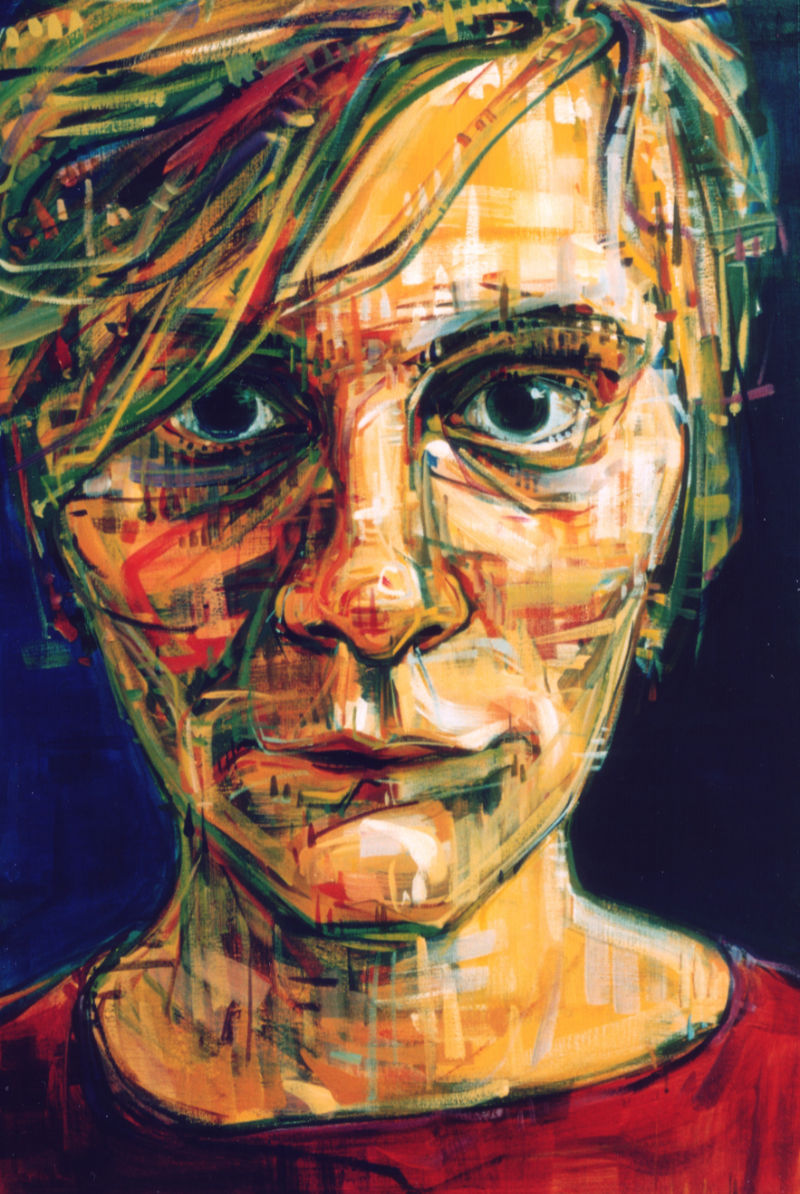Artwork / Snow Days / Artist as News Anchor

Artist as News Anchor
2004
acrylic on canvas
36 x 24 inches
I was 23 when I created Snow Days and wrote the following manifesto. In other words, I was just starting to suffer from endometriosis, but I was five years away from my first surgery and diagnosis, and I’d never dreamed of the kind of art that illness would inspire. I was a child, and, though I still believe a lot of what I wrote, my understanding of things has evolved some.
I created this work...
...to encourage more commission work. Commission work is my real interest because I care that those who buy my work care not only about my work but also my subject. I will not sell portraits of my family and friends or of anonymous models. My paintings are as much about my subject as they are about my work and myself. Beyond this rejection of contemporary portraiture, I recognize that people react to portraits of themselves in a way that they cannot react to any other art object. I intend to paint every person’s portrait and in that way interest people in art—one person at a time, one painting at a time. Since my subjects from this series are recognizable to Portlanders, I hope to reach a larger public, find more commission work, and paint more portraits.
...to explore the commercial versus fine art line. Portraiture may be the commercial bastard child of fine art, but commercial art and the craft it implies can have real significance in a world gone to poop paint abstractions and conceptual gimmicks without any stimulating visual output. As the definitions blur in other genres—with lip-gloss still lives and studious landscapes finding their way into fine art galleries—the depth of portraiture should be explored as well. The very campiness of my subject choice underlines the fine art push on portraiture that I am making.
...to question the state of our hyper-plugged-in and thoroughly disconnected world. Who are these people we invite into our homes through our television sets? Why do we trust them simply because they are on television? Do we know them at all? Why do some of us feel justified in sending them emails about wardrobe choices? We feel we know and trust them, but we do not stop to consider their humanity. They have the trust and acceptance of many and the dislike of others all for what they say or do not say—or, unfortunately, wear or do not wear. Our understanding of their worth is hardly based on who they actually are. They are trusted by many but known by few. They shoulder the enormous responsibility of shaping our world—and not one person at a time, but in frightening bulk.